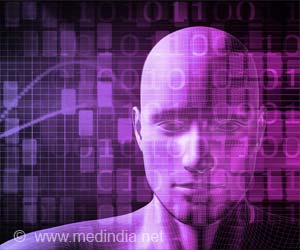
“Field workers could put a blood sample on a slide, take a picture, and send it to specialists to analyze,” says Sebastian Wachsmann-Hogiu, a physicist with Department of Pathology and Laboratory Medicine and the Center for Biophotonics, Science and Technology, University of California, Davis. He is also the lead author of the research.
The group is not the first to build a smartphone microscope. “But we thought we could make something simpler and less expensive,” Wachsmann-Hogiu says.
His first attempt took simplicity too far. “We started with a drop of water on the camera’s lens,” he says. “The water formed a meniscus, and its curved surface acted like a magnifying lens. It worked fine, but the water evaporated too fast.”
Then the team turned to ball lenses. These are finely ground glass spheres that act as low-powered magnifying glasses. The team used a 1-millimeter-diameter ball lens that costs $30-40 USD in their prototype, but mass-produced lenses could be substituted to reduce the price.
To build the microscope’s lens, Kaiqin Chu, a post-doctoral researcher in optics, inserted a ball lens into a hole in a rubber sheet, then simply taped the sheet over the smartphone’s camera.
Advertisement
Even though smartphone micrographs are not as sharp as those from laboratory microscopes, they are able to reveal important medical information, such as the reduced number and increased variation of cells in iron deficiency anemia, and the banana-shaped red blood cells characteristic of sickle cell anemia.
Advertisement
When researchers need additional diagnostic tools, the microscope could be swapped for a simple spectrometer that also uses light collected by the iPhone’s camera.
Spectrometers smear out light from an object, separating it into its composite wavelengths in much the way a prism breaks up white light in the familiar colors of the rainbow. Since atoms and molecules absorb very specific wavelengths when exposed to light, it is possible to tease out the chemical signature of materials by studying their spectra.
Like the microscope, the iPhone’s spectrometer takes advantage of smartphone imaging capabilities. “We had worked with spectrometers for diagnostics, and didn’t think it would be too far a stretch,” Wachsmann-Hogiu says.
Though the spectrometer is still in its early stages, the researchers believe it could measure the amount of oxygen in the blood and help diagnose chemical markers of disease.
Because smartphone instruments are powerful and cheap, Wachsmann-Hogiu believes schools could use them to enrich science classes. Spectrometers could help illustrate lessons about light and energy. Microscopes could unveil an invisible world of sugar crystals, pollen grains, and microscopic organisms.
By intelligently exploiting smartphone features, Wachsmann-Hogiu’s group promises to both save lives and illuminate science.
Source-Medindia






